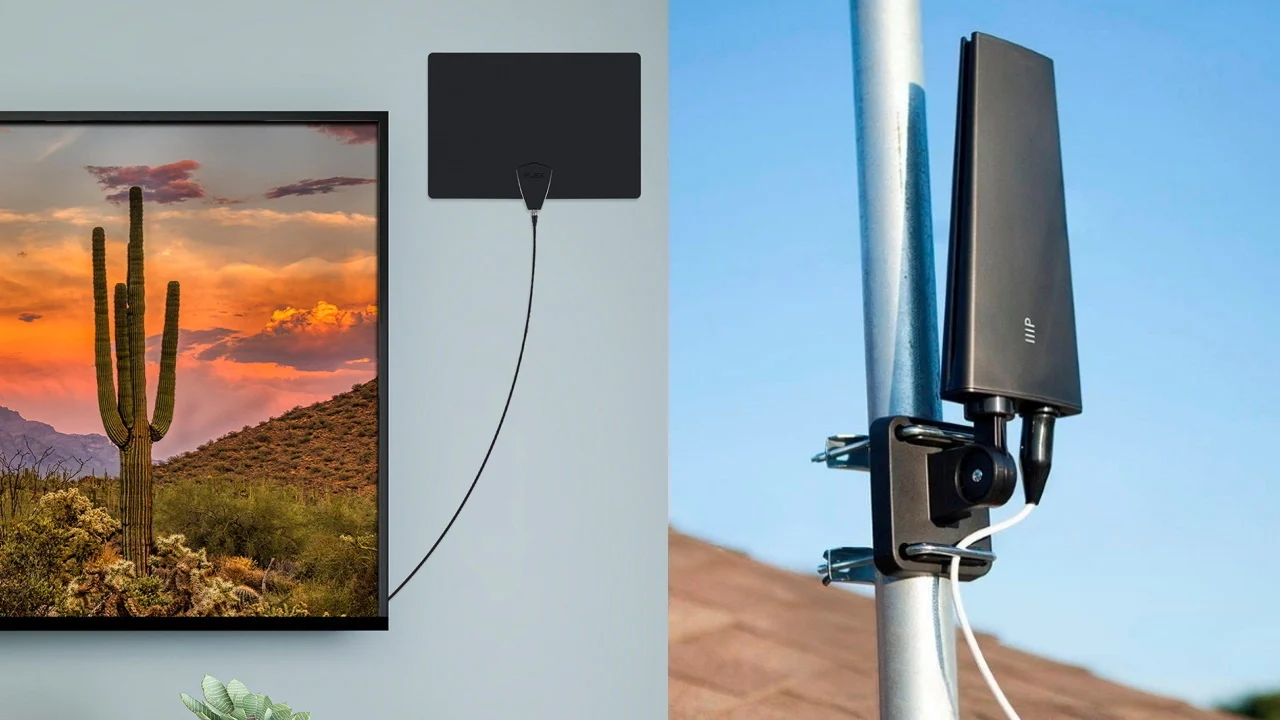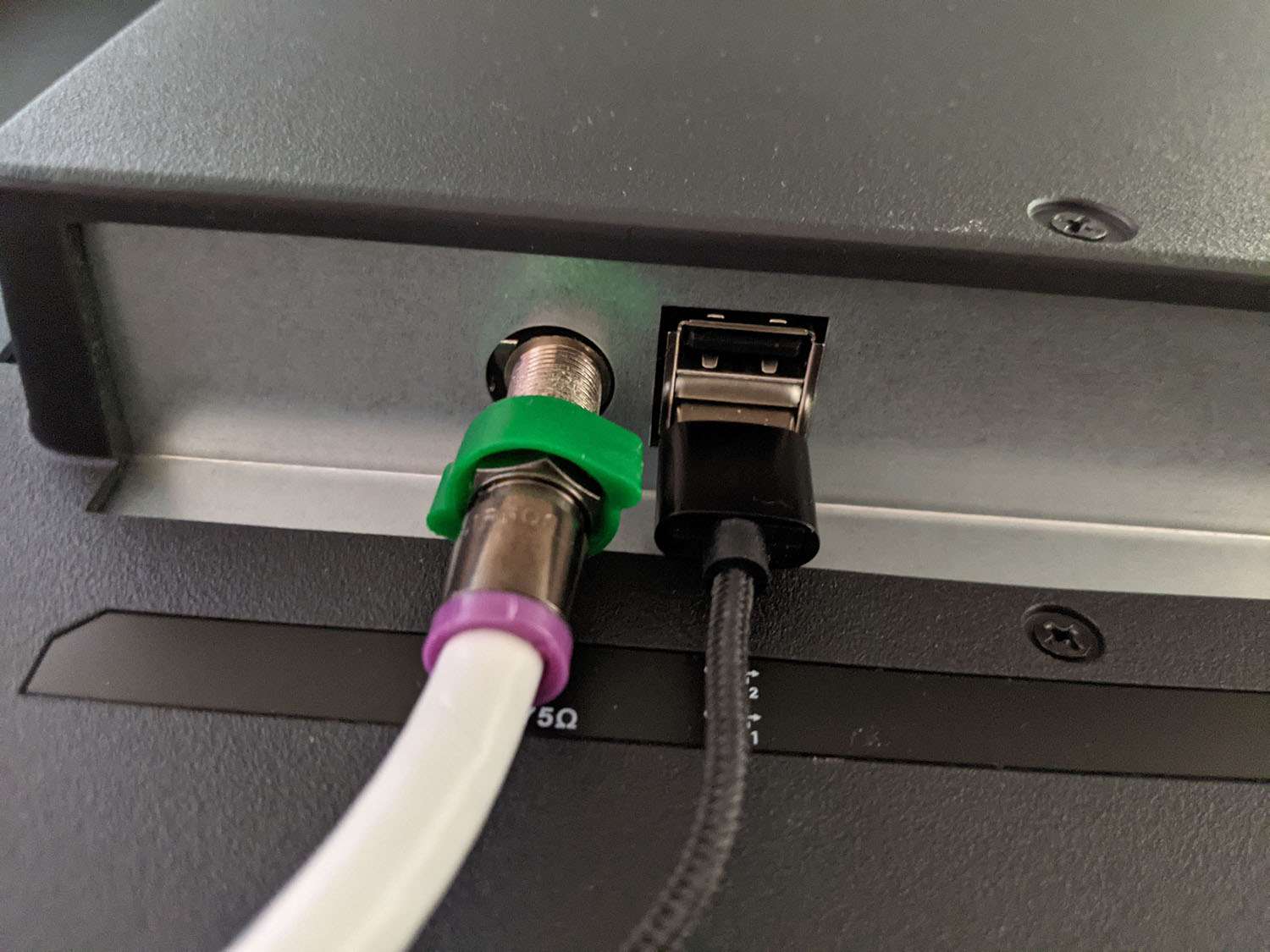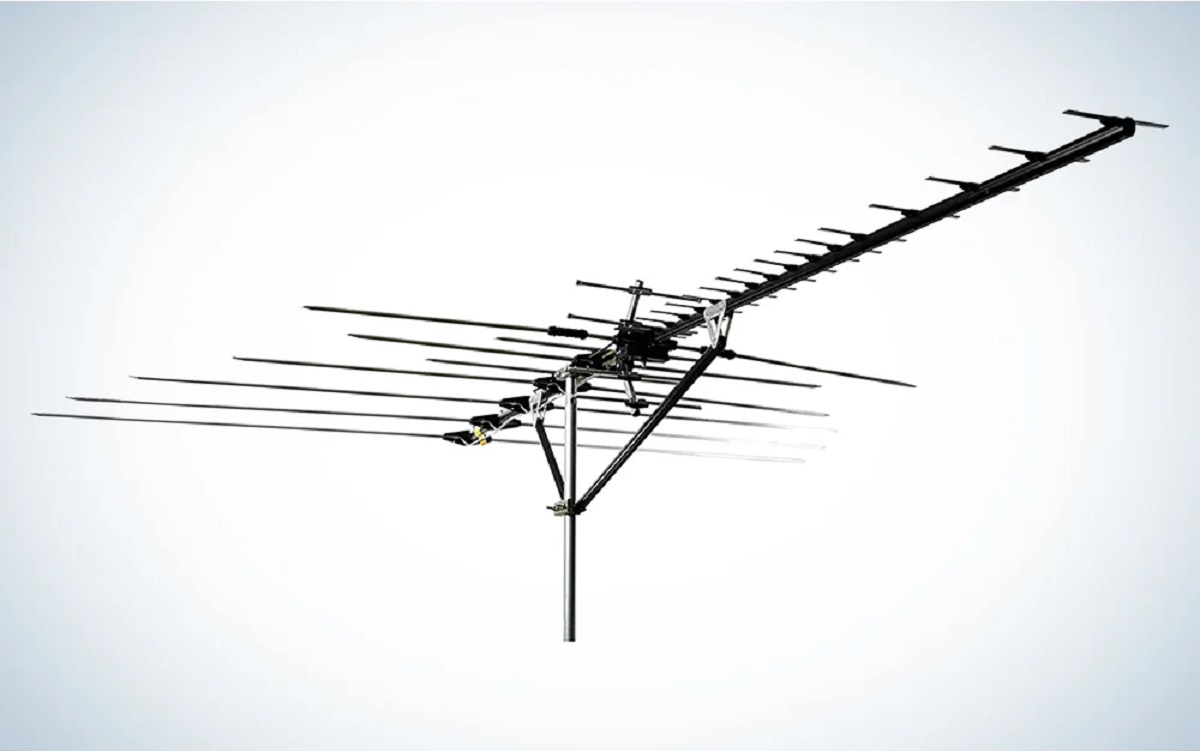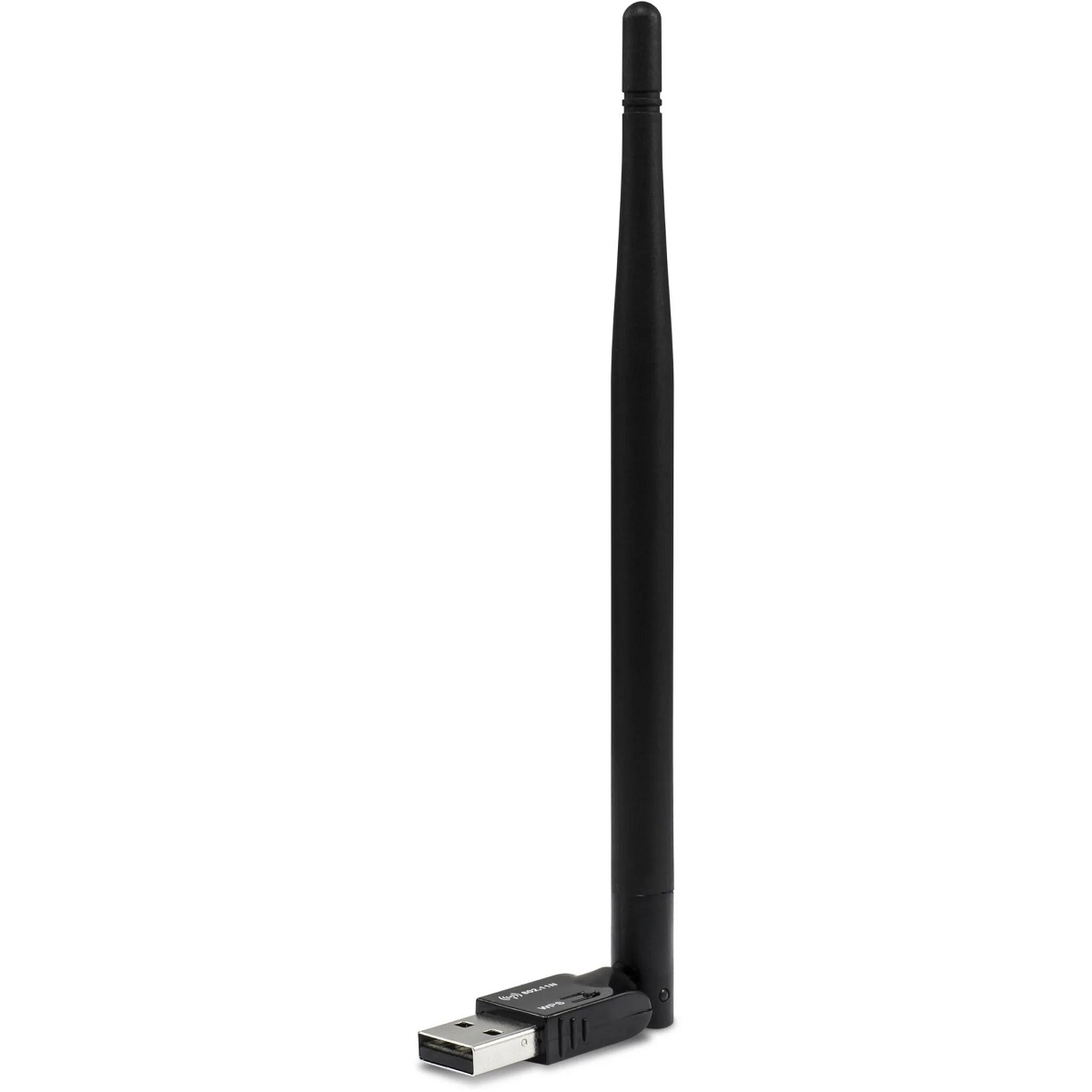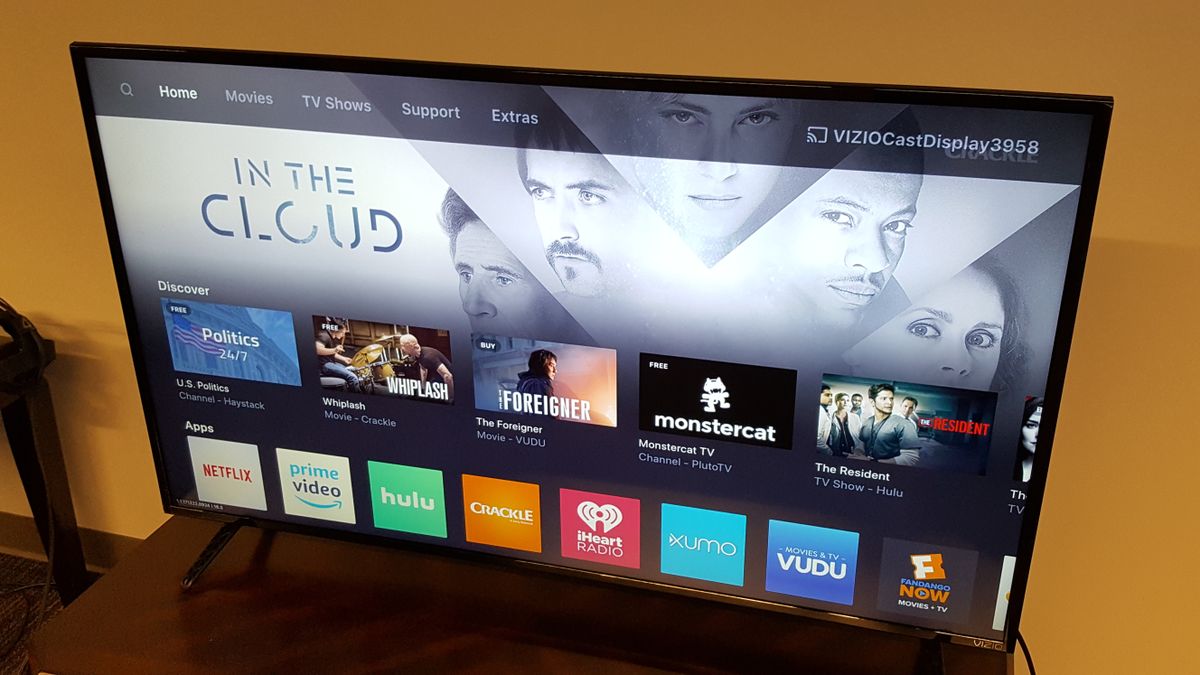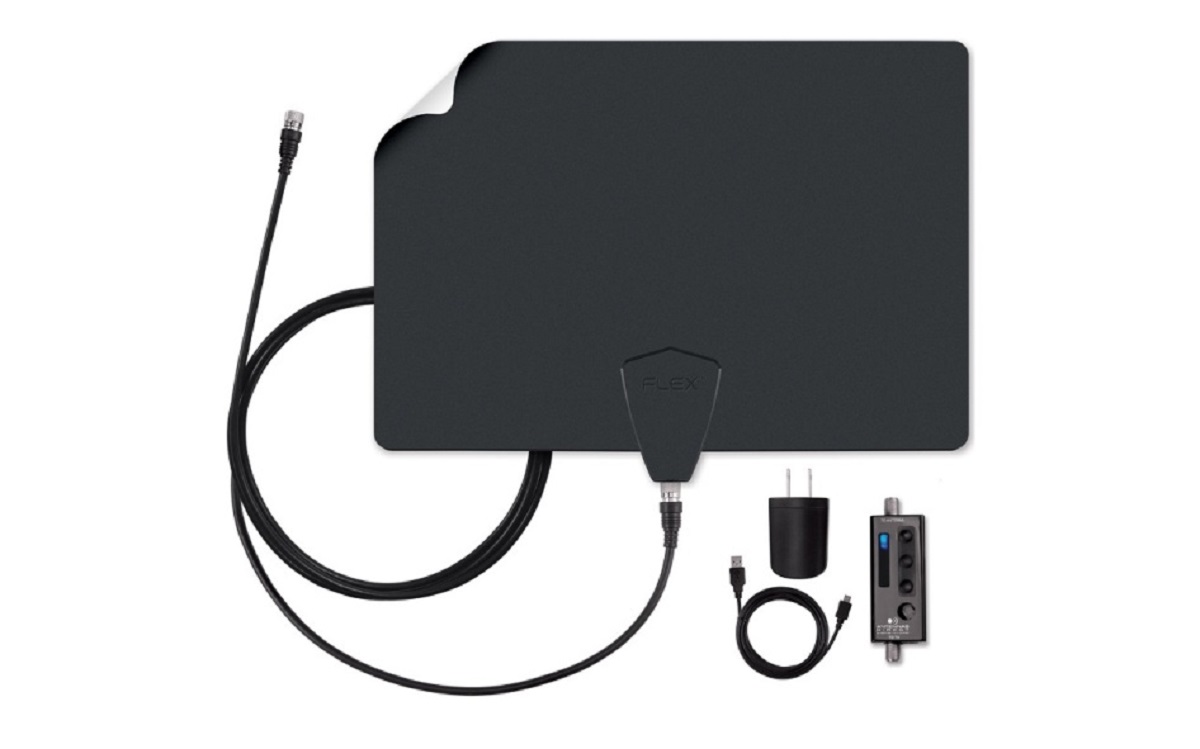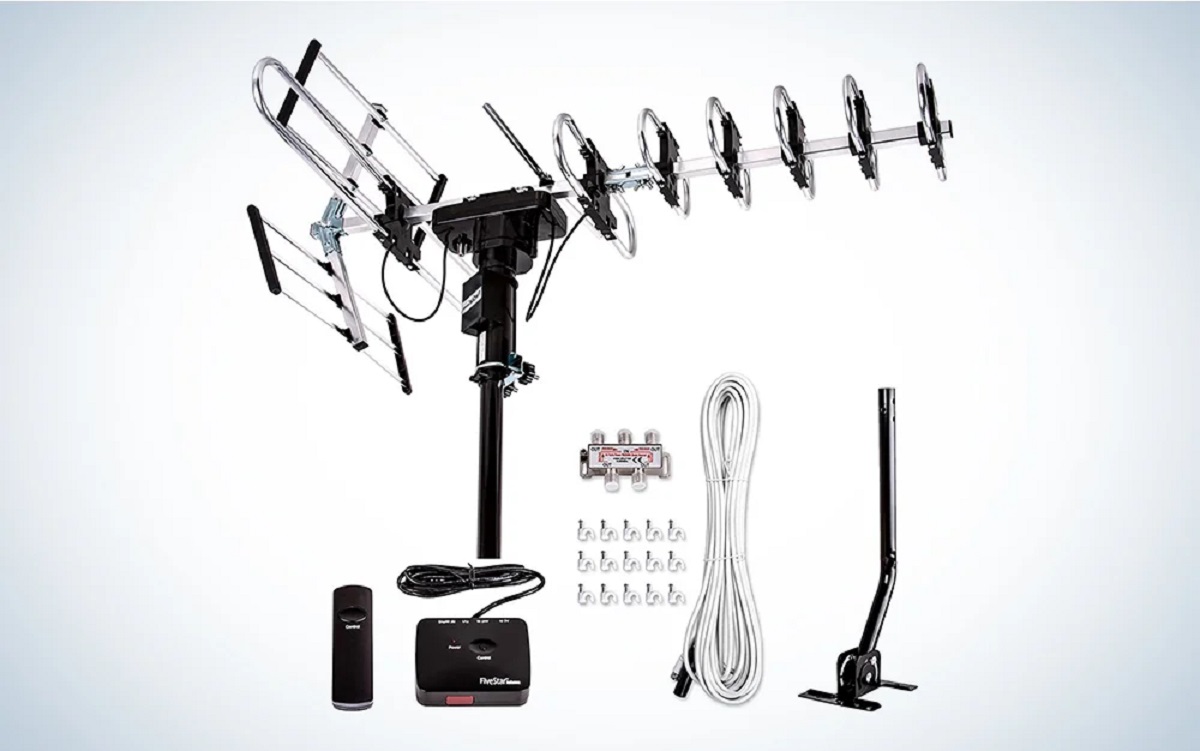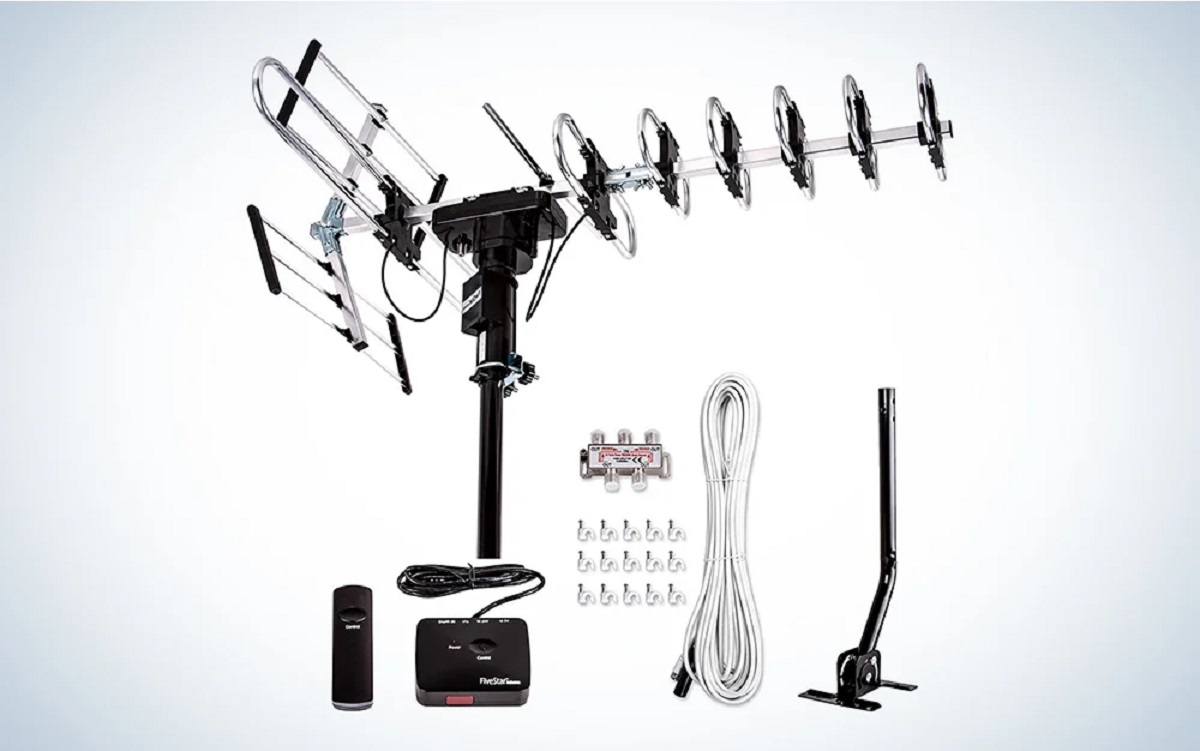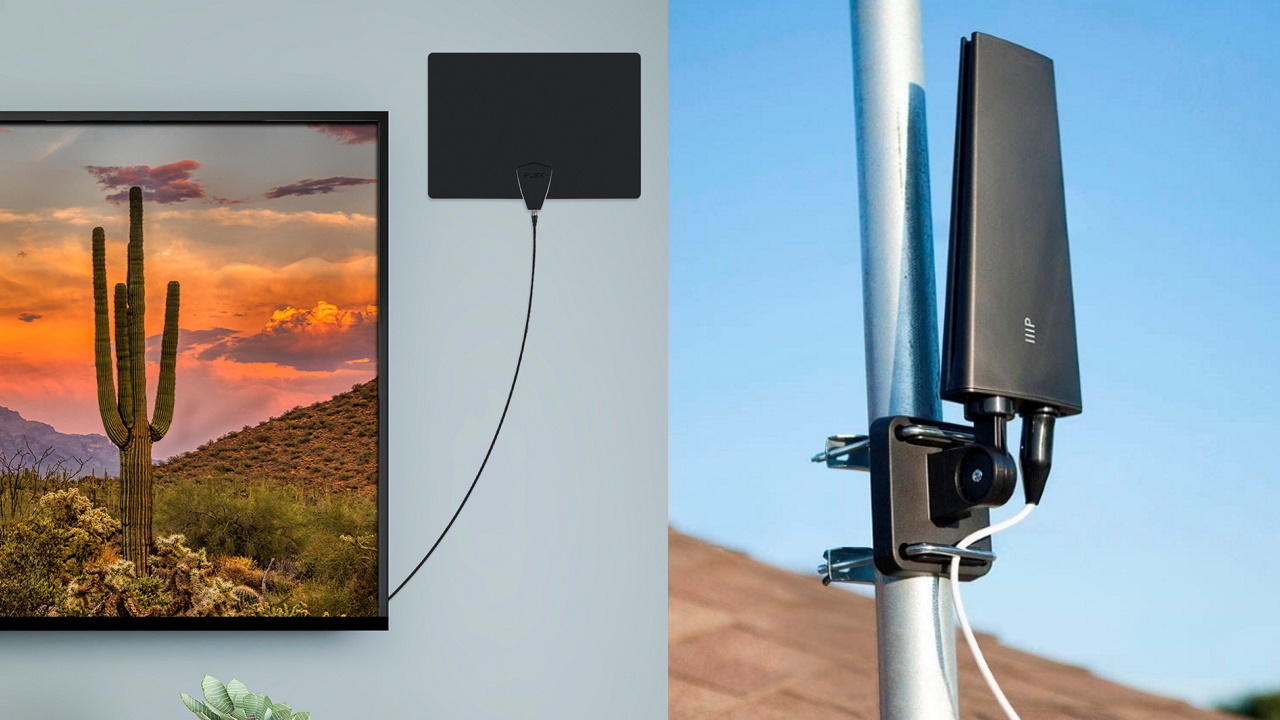Introduction
So, you’ve decided to jump on the smart TV bandwagon and enjoy the endless entertainment possibilities it offers. But wait, before you can start streaming your favorite shows and movies, there’s one essential component you shouldn’t overlook: the antenna. A TV antenna is a crucial addition to your smart TV setup, as it allows you to access local channels and enjoy high-definition broadcasts without the need for cable or satellite subscriptions.
Choosing the right antenna for your smart TV can seem like a daunting task, especially with the plethora of options available in the market. Understanding the different types of antennas and their features is vital in ensuring that you get the best reception and picture quality.
In this article, we will guide you through the process of selecting the perfect antenna for your smart TV. We will delve into the factors you need to consider and discuss the various antenna types, such as indoor and outdoor antennas, flat panel antennas, amplified antennas, multi-directional antennas, and uni-directional antennas. Additionally, we will provide tips on antenna placement to optimize signal strength.
By the end of this article, you will have a clear understanding of the type of antenna you need for your smart TV, helping you enjoy a seamless viewing experience with access to all your favorite local channels.
Understanding TV Antennas
Before we dive into the different types of antennas, let’s take a moment to understand what a TV antenna is and how it works. A TV antenna, also known as an aerial, is a device that receives over-the-air broadcast television signals. These signals are transmitted by local TV stations and are typically available for free. By connecting an antenna to your smart TV, you can receive these signals and watch a variety of channels without the need for cable or satellite subscriptions.
TV antennas work based on the principle of capturing electromagnetic waves. When a TV station broadcasts a signal, it travels through the air in the form of radio waves. The antenna’s primary function is to capture these radio waves and convert them into electrical signals that can be processed by your smart TV to display the corresponding television content.
When it comes to choosing a TV antenna, it’s important to consider your location and the distance from the broadcasting stations. If you live in an urban area with multiple TV stations nearby, you may have better reception and can opt for an indoor antenna. However, if you reside in a rural area with stations located farther away, an outdoor antenna might be a better option.
Another factor to consider is the frequency bands used for TV broadcasts. There are two primary frequency bands: Very High Frequency (VHF) and Ultra High Frequency (UHF). VHF signals have longer wavelengths and are usually used by channels 2-13, while UHF signals have shorter wavelengths and are used by channels 14-51. Understanding the frequency bands is important when choosing an antenna, as some are designed to capture both VHF and UHF signals, while others may focus on one specific band.
Now that you have a basic understanding of TV antennas and how they work, let’s explore the different types of antennas available and their specific features that are suitable for your smart TV setup-
Factors to Consider
When choosing a TV antenna for your smart TV, there are several important factors to consider to ensure optimal performance and reception. Taking these factors into account will help you select the right antenna that suits your needs and location. Let’s take a closer look at these factors:
- Location: The geographical location of your home plays a significant role in determining the type of antenna you need. Urban areas typically have multiple broadcasting stations nearby, making indoor antennas a viable option. However, rural areas may require outdoor antennas to capture signals from a greater distance.
- Distance to broadcasting stations: The proximity of your home to the broadcasting stations is crucial. If you live relatively close to the stations, you may opt for a less powerful antenna. However, if you are located far away, you will need a more robust antenna to ensure strong signal reception.
- Surrounding obstacles: Consider any physical obstructions such as tall buildings, trees, or other structures that may interfere with the signal reception. These obstacles can weaken the signal strength and require the use of a more advanced antenna or an outdoor antenna with a higher elevation.
- Signal strength: Determining the strength of the signals in your area is essential. You can use online tools or smartphone apps to check the signal strength of local TV stations. This information will help you choose an antenna that can properly capture the signals and provide better picture quality.
- Antenna type: There are various types of antennas available, including indoor, outdoor, flat panel, amplified, multi-directional, and uni-directional antennas. Each type has its own advantages and disadvantages, so it’s important to consider the specific features and capabilities of each type before making a decision.
By taking these factors into account, you can make an informed decision when selecting a TV antenna for your smart TV. Remember, choosing the right antenna is crucial for obtaining clear and uninterrupted reception of local channels, ensuring you have a pleasant viewing experience.
VHF vs UHF Signals
When it comes to TV broadcasts, there are two primary frequency bands: Very High Frequency (VHF) and Ultra High Frequency (UHF). Understanding the difference between these two bands is essential in selecting the right antenna for your smart TV.
VHF signals have longer wavelengths and can travel longer distances with greater penetration through obstacles such as buildings and trees. Channels 2-13 are typically broadcasted on VHF frequencies. If you live in an area where the majority of local channels are in the VHF band, it is important to choose an antenna that is specifically designed to capture these signals.
On the other hand, UHF signals have shorter wavelengths and provide better reception in urban areas with a high density of buildings. Channels 14-51 are usually transmitted on UHF frequencies. If you live in a metropolitan area, a UHF antenna might be more suitable for receiving local channels.
Some antennas are designed to capture both VHF and UHF signals, making them versatile for different broadcasting scenarios. These antennas are labeled as “VHF/UHF” or “Dual-Band” antennas. They are a common choice for areas where a mix of VHF and UHF channels are available.
When selecting an antenna, it is essential to check the specifications provided by the manufacturer to determine which frequency bands the antenna is optimized for. Some antennas may have a larger focus on one band over the other, so ensure that the antenna you choose aligns with the predominant frequency bands in your area.
In summary, understanding the difference between VHF and UHF signals will help you determine which type of antenna is best suited for your smart TV setup. Consider the local channels in your area and the frequency bands they use, and choose an antenna that is specifically designed to capture those signals. By selecting the appropriate antenna, you can ensure optimal reception and enjoy high-quality TV broadcasts on your smart TV.
Indoor Antennas
If you live in an urban area or near broadcasting stations, an indoor antenna can be a convenient and cost-effective option for receiving local channels on your smart TV. Indoor antennas are designed to be compact and easy to install, making them suitable for apartments, dorm rooms, or situations where outdoor antenna placement is not feasible.
When choosing an indoor antenna, there are a few factors to consider:
- Antenna type: Indoor antennas come in various types, including rabbit ear antennas, loop antennas, and flat panel antennas. Rabbit ear antennas have adjustable rods that can be extended to maximize signal reception. Loop antennas form a loop or circle shape and are suitable for UHF signals. Flat panel antennas are thin and can be easily mounted on walls or windows.
- Amplified vs. non-amplified: Indoor antennas are available in both amplified and non-amplified versions. Amplified antennas have an integrated signal amplifier that enhances signal strength and reception, making them ideal for locations with weak or distant signals. Non-amplified antennas are simpler in design but may be sufficient for areas with strong signal strength.
- Placement and positioning: Proper antenna placement is crucial for optimal reception. Experiment with different positions near windows or higher up in the room to find the best spot for signal capture. Keep in mind that obstacles such as walls and buildings can interfere with signal reception, so try different locations to ensure the best possible reception.
- Signal range and channels: Check the specifications of the indoor antenna to ensure it covers the frequency bands used by local channels in your area. Some indoor antennas may have a range limit, so make sure it covers the distance between your home and the broadcasting stations to avoid signal loss or interference.
Indoor antennas are a popular choice due to their compact size, ease of installation, and affordability. However, their performance may vary depending on the distance from broadcasting stations and the presence of obstacles. It is recommended to try different types and brands of indoor antennas to find the one that provides the best reception and picture quality for your specific location.
Remember, while indoor antennas are convenient, they may not be as powerful as outdoor antennas, especially in areas with weak signals. If you experience poor reception with an indoor antenna, you may need to consider an outdoor antenna for better signal capture.
Outdoor Antennas
Outdoor antennas are a popular choice for areas with weak signal strength or when you want to maximize the reception capabilities of your smart TV. These antennas are designed to be installed outside your home, such as on rooftops or in attics, to capture stronger signals from broadcasting stations.
When considering an outdoor antenna, there are a few key points to keep in mind:
- Antenna size and design: Outdoor antennas are generally larger and more powerful than their indoor counterparts. They come in different designs, including Yagi antennas, which feature a row of elements, and log periodic antennas, which have multiple elements of varying lengths. The size and design of the antenna determine its reception capabilities.
- Directionality: Outdoor antennas can be either uni-directional or multi-directional. Uni-directional antennas are designed to receive signals from one specific direction, making them ideal for areas where all the broadcasting stations are located in one direction. Multi-directional antennas, on the other hand, can capture signals from multiple directions, making them suitable for areas with stations located in different directions.
- Signal amplifier: Some outdoor antennas come with built-in signal amplifiers that help boost weak signals and improve overall reception. These amplifiers can be particularly useful in areas with a significant distance between your home and the broadcasting stations.
- Mounting and installation: Outdoor antennas require proper mounting and installation to ensure stability and optimal reception. Depending on the type of antenna, mounting brackets, poles, or masts may be needed for secure installation on the roof or in the attic. It is important to follow the manufacturer’s instructions and consider professional installation if needed.
Outdoor antennas are typically more powerful than indoor antennas, allowing for better signal capture and reception. They are especially beneficial in rural areas or locations with weak signals, where indoor antennas may struggle to provide satisfactory reception. With proper installation and positioning, outdoor antennas can provide access to a wide range of local channels with superior picture and sound quality.
Before selecting an outdoor antenna, research the distance and direction of the broadcasting stations in your area to determine the appropriate antenna type and size. Also, consider the presence of any obstacles, such as tall buildings or trees, that may affect signal reception. By choosing the right outdoor antenna for your smart TV, you can enjoy reliable and high-quality access to your favorite local channels.
Flat Panel Antennas
Flat panel antennas, also known as digital antennas, are a sleek and modern option for receiving local channels on your smart TV. These antennas are thin, compact, and can be easily mounted on walls, windows, or even behind your TV. They are designed to capture both VHF and UHF signals and offer a convenient solution for those who prefer a discreet antenna setup.
When considering a flat panel antenna, here are some important points to keep in mind:
- Design: Flat panel antennas are typically rectangular in shape and feature a flat surface. They are thinner and more lightweight compared to traditional outdoor antennas, making them a visually appealing option that blends well with modern decor.
- Indoor installation: Flat panel antennas are designed for indoor use, making them ideal for apartments, condos, or areas where outdoor antennas are not allowed or practical. They can be easily mounted on walls or windows using adhesive strips or included brackets.
- Signal reception: The performance of flat panel antennas can vary depending on the specific model and the signal strength in your area. It is important to choose an antenna with good reception capabilities and a wide frequency range to capture both VHF and UHF signals effectively.
- Multi-directional: Many flat panel antennas are designed to be multi-directional, which means they can capture signals from various directions. This makes them suitable for areas where broadcasting stations are spread out or located in different directions.
- Signal amplifier: Some flat panel antennas come with built-in signal amplifiers to boost weak signals and improve reception, especially in areas with long distances from broadcasting stations. Amplified flat panel antennas can provide a stronger and more reliable signal reception.
Flat panel antennas offer a convenient and aesthetically pleasing solution for receiving local channels on your smart TV. They are suitable for urban areas with close proximity to broadcasting stations or areas where outdoor antennas are not feasible. However, it is important to consider the signal strength in your area and the specific features of the flat panel antenna to ensure optimal performance.
When choosing a flat panel antenna, read customer reviews and check the specifications provided by the manufacturer to ensure compatibility with the local channels available in your area. Proper positioning and adjustment of the antenna may also be necessary to maximize signal reception and ensure the best possible picture quality on your smart TV.
Amplified Antennas
Amplified antennas, also known as signal booster antennas, are designed to enhance signal reception and improve the overall performance of your smart TV. These antennas come with built-in signal amplifiers that boost weak signals, allowing for better picture quality and increased channel options.
Here are some key points to consider when it comes to amplified antennas:
- Signal amplification: Amplified antennas use built-in amplifiers to increase the strength of the incoming signals. This can be particularly beneficial in areas with weak or distant broadcasting stations, where a regular antenna may struggle to capture a reliable signal.
- Improved reception: With the amplification feature, these antennas can capture and enhance weak signals, providing better reception and reducing the likelihood of signal dropouts or pixelation on your smart TV.
- Range: Amplified antennas typically offer a greater range compared to non-amplified antennas. This means they can capture signals from a larger distance, making them suitable for areas located further away from broadcasting stations.
- Noise amplifier: Some amplified antennas feature built-in noise amplifiers that reduce electromagnetic interference and background noise, resulting in a clearer and more stable signal.
- Power source: Amplified antennas require a power source to operate the built-in amplifier. They are typically powered through a USB connection or an AC adapter. Make sure to consider the availability of power outlets near your TV when choosing an amplified antenna.
Amplified antennas are a reliable option for those living in areas with weak or distant broadcasting stations, or in situations where signal interference is common. However, it’s important to note that while amplification can enhance weak signals, it can also amplify existing noise or interference, so proper placement and adjustment of the antenna are crucial to achieve optimal results.
When selecting an amplified antenna, consider factors such as the distance to broadcasting stations, the strength of the signals in your area, and any potential obstacles that may affect signal reception. Additionally, read customer reviews and check the specifications provided by the manufacturer to ensure compatibility with the frequency bands used by local channels in your area.
Overall, amplified antennas can significantly improve signal reception and enhance the viewing experience on your smart TV, especially in areas with challenging signal conditions. By choosing the right amplified antenna and optimizing its placement, you can enjoy a wider range of channels and better picture quality on your smart TV.
Multi-directional Antennas
Multi-directional antennas, as the name suggests, are designed to capture signals from multiple directions. These antennas offer a convenient solution for areas where broadcasting stations are spread out in different directions, eliminating the need to constantly adjust the antenna to receive various channels on your smart TV.
Let’s explore some key points to consider when it comes to multi-directional antennas:
- 360-degree reception: Multi-directional antennas are designed to receive signals from all directions, providing a 360-degree reception pattern. This allows you to access channels coming from different broadcasting stations without the need to reposition the antenna.
- Flexibility: With a multi-directional antenna, you have the flexibility to place your antenna without worrying about the specific direction of broadcasting stations. This makes it an ideal choice for urban areas where stations are scattered, or for locations where the exact positioning of the antenna is challenging.
- Signal range: Multi-directional antennas come in a range of sizes and strengths, each with its own signal range specification. Consider the distance between your home and the broadcasting stations in your area, and select an antenna with a signal range that covers that distance effectively.
- Signal interference: While multi-directional antennas are designed to pick up signals from various directions, they may be susceptible to signal interference in environments with high levels of electromagnetic interference. In such cases, amplifiers or additional signal filtering devices may be needed to improve signal quality.
- Placement and positioning: Proper placement and positioning of a multi-directional antenna are crucial for optimal signal reception. Experiment with different locations and heights, and consider obstacles such as buildings or trees that may obstruct the signal. This will help you find the best spot to capture the strongest and clearest signals.
Multi-directional antennas offer convenience and flexibility, eliminating the need for constant antenna adjustments. They are especially beneficial for those residing in areas with broadcasting stations located in different directions. With a well-placed multi-directional antenna, you can enjoy a wide range of local channels on your smart TV with ease.
When selecting a multi-directional antenna, read customer reviews and check the specifications provided by the manufacturer to ensure compatibility with the frequency bands used by local channels in your area. Consider the signal range, amplification features, and any additional signal filtering capabilities that may be necessary to achieve optimal signal reception.
By choosing the right multi-directional antenna and positioning it correctly, you can enjoy seamless access to a variety of channels from different broadcasting stations on your smart TV, enhancing your viewing experience with ease and convenience.
Uni-Directional Antennas
Uni-directional antennas, also known as directional antennas, are designed to capture signals from one specific direction. These antennas offer a focused reception pattern and are ideal for areas where all the broadcasting stations are located in a single direction from your smart TV.
Let’s delve into the key points to consider when it comes to uni-directional antennas:
- Precise signal capture: Uni-directional antennas are designed to maximize signal reception from a specific direction, allowing for optimal capture of signals from broadcasting stations. This focused reception pattern helps minimize interference from signals originating from other directions.
- Long-range capability: Uni-directional antennas are known for their long-range capabilities, making them suitable for locations where broadcasting stations are at a significant distance from your smart TV. These antennas can capture signals over longer distances compared to omnidirectional antennas.
- Signal strength: Uni-directional antennas have the advantage of providing higher signal gain than other antenna types. This means they can amplify weak signals, improving overall reception quality and ensuring a clearer picture on your smart TV.
- Signal interference: While uni-directional antennas excel at capturing signals from a specific direction, they may be more susceptible to potential signal interference or blockage from obstacles such as buildings or trees. It is important to carefully consider the positioning and placement of the antenna to avoid any signal obstacles.
- Antenna adjustment: If you have broadcasting stations located in multiple directions, a uni-directional antenna may require manual adjustment when you want to switch between channels from different directions. This adjustment involves physically repositioning the antenna to align it with the desired broadcasting station.
Uni-directional antennas offer focused signal capture and are ideal for areas where all the broadcasting stations are located in a single direction. Consider the distance from your home to the broadcasting stations, the specific direction of those stations, and the potential signal interference from surrounding obstacles when selecting and positioning a uni-directional antenna.
When choosing a uni-directional antenna, research customer reviews and check the specifications provided by the manufacturer to ensure compatibility with the frequency bands used by local channels in your area. Look for antennas with a high-gain rating to maximize signal capture and ensure a reliable signal reception on your smart TV.
With a well-placed uni-directional antenna, you can optimize signal reception from specific broadcasting stations, providing you with clear and uninterrupted access to local channels on your smart TV.
Antenna Placement
Proper antenna placement is critical to ensure optimal signal reception and maximize the performance of your TV antenna. The placement of your antenna can significantly impact the quality of the received signal and determine the number of channels that can be accessed on your smart TV. Here are some key considerations for antenna placement:
- Height: Placing your antenna at a higher elevation can improve signal reception. The higher the antenna is positioned, the better it can avoid obstructions such as buildings, trees, and other structures that may obstruct the signal path.
- Line of sight: Ensure that your antenna has a clear line of sight to the broadcasting stations. Obstacles such as buildings, hills, and trees can block or weaken the signal. Position the antenna in a location where there are minimal obstructions between the antenna and the broadcasting stations.
- Window placement: In some cases, placing your antenna near a window can improve signal reception as windows generally have less obstruction compared to walls. Experiment with different window placements to see if it enhances the signal strength and quality on your smart TV.
- Orientation: For uni-directional antennas, proper orientation is crucial. Align the antenna in the direction of the broadcasting stations for optimal signal capture. For multi-directional antennas, ensure the antenna is pointing in a position where it can capture signals from various directions effectively.
- Adjustment: Fine-tuning the position and angle of your antenna may be necessary to find the best signal reception. Experiment with slight adjustments and monitor the signal strength using your smart TV’s signal meter or a signal strength app to find the optimal placement for the antenna.
- Consider professional installation: If you are experiencing difficulties with antenna placement or if you are unsure about the optimal position to capture the best signal, it may be worthwhile to seek professional assistance. A professional installer can assess your location, conduct a signal analysis, and install the antenna in the most suitable position for optimal signal reception.
Remember, the ideal antenna placement will vary depending on factors such as your location, proximity to broadcasting stations, surrounding environment, and the type of antenna you are using. Take the time to experiment with different placements and orientations to find the optimal setup that provides the best signal reception for your smart TV.
By considering these factors and optimizing the placement of your antenna, you can ensure clear and uninterrupted reception of local channels, giving you a satisfying and enjoyable viewing experience on your smart TV.
Conclusion
Choosing the right antenna for your smart TV is essential to ensure you have access to a wide range of local channels and enjoy a high-quality viewing experience. Understanding the different types of antennas, such as indoor and outdoor antennas, flat panel antennas, amplified antennas, multi-directional antennas, and uni-directional antennas, can help you make an informed decision based on your specific needs and location.
Indoor antennas are convenient and suitable for urban areas or locations near broadcasting stations. They come in various types, sizes, and designs, offering different features and signal reception capabilities. Flat panel antennas, in particular, provide a sleek and modern design that can be easily mounted on walls or windows.
Outdoor antennas, on the other hand, are recommended for areas with weak signals or in rural locations where broadcasting stations are farther away. They provide greater signal range, long-range reception, and can be either uni-directional or multi-directional, depending on the location of the stations.
Amplified antennas can improve reception in areas with weak signals, while multi-directional antennas eliminate the need for constant antenna adjustments in locations with broadcasting stations in different directions. Uni-directional antennas offer focused signal capture for areas with all stations in one direction.
Proper antenna placement is crucial for optimizing signal reception. Factors such as height, line of sight, window placement, orientation, and adjustment play a significant role in ensuring the best possible signal reception on your smart TV. Seeking professional assistance for antenna installation may be beneficial if you are experiencing challenges with placement.
Remember to consider factors such as your location, distance to broadcasting stations, signal strength, and local terrain when selecting and positioning your antenna. By choosing the right antenna and optimizing its placement, you can enjoy a wide range of local channels with clear reception and superior picture quality on your smart TV.







